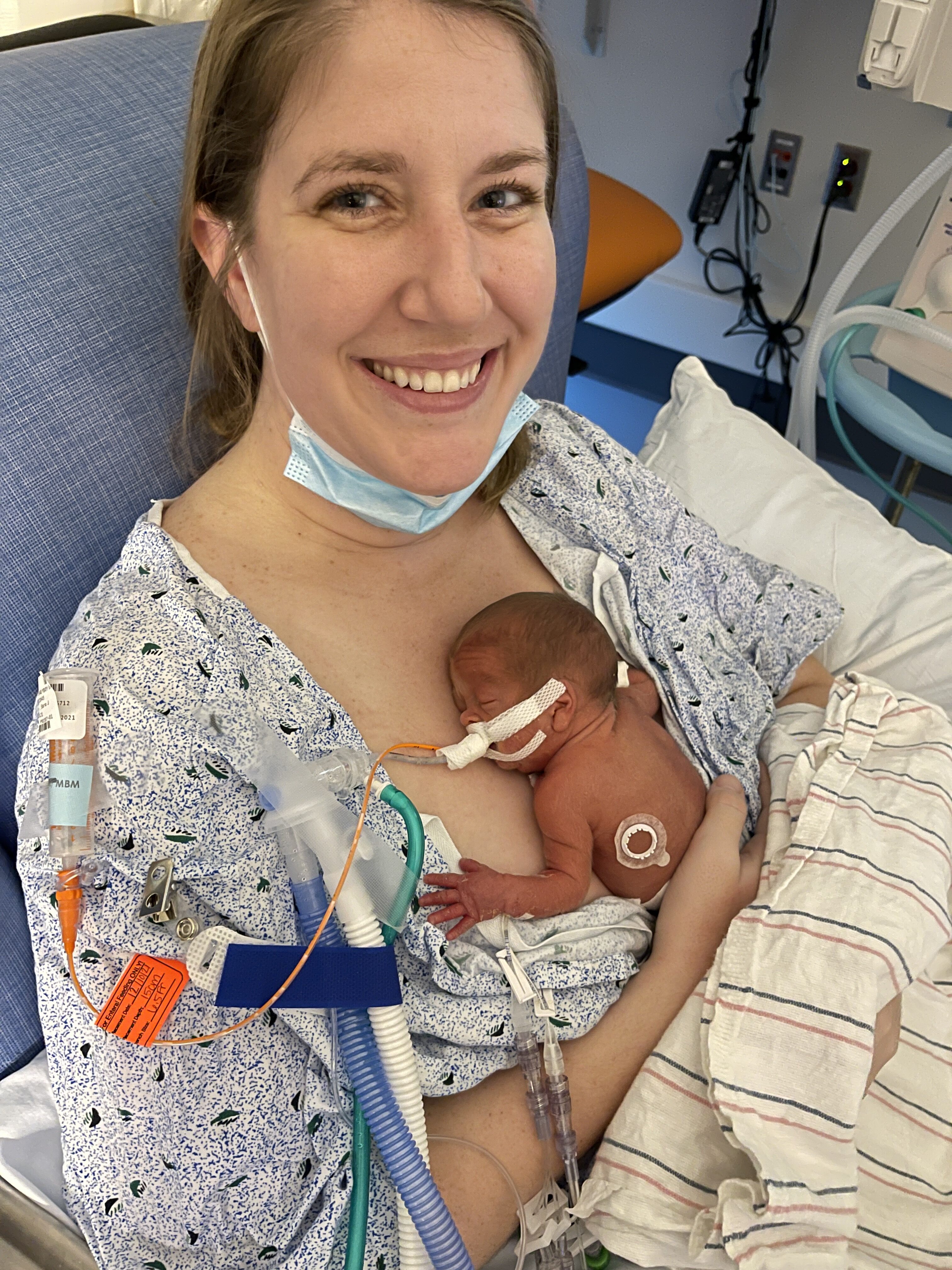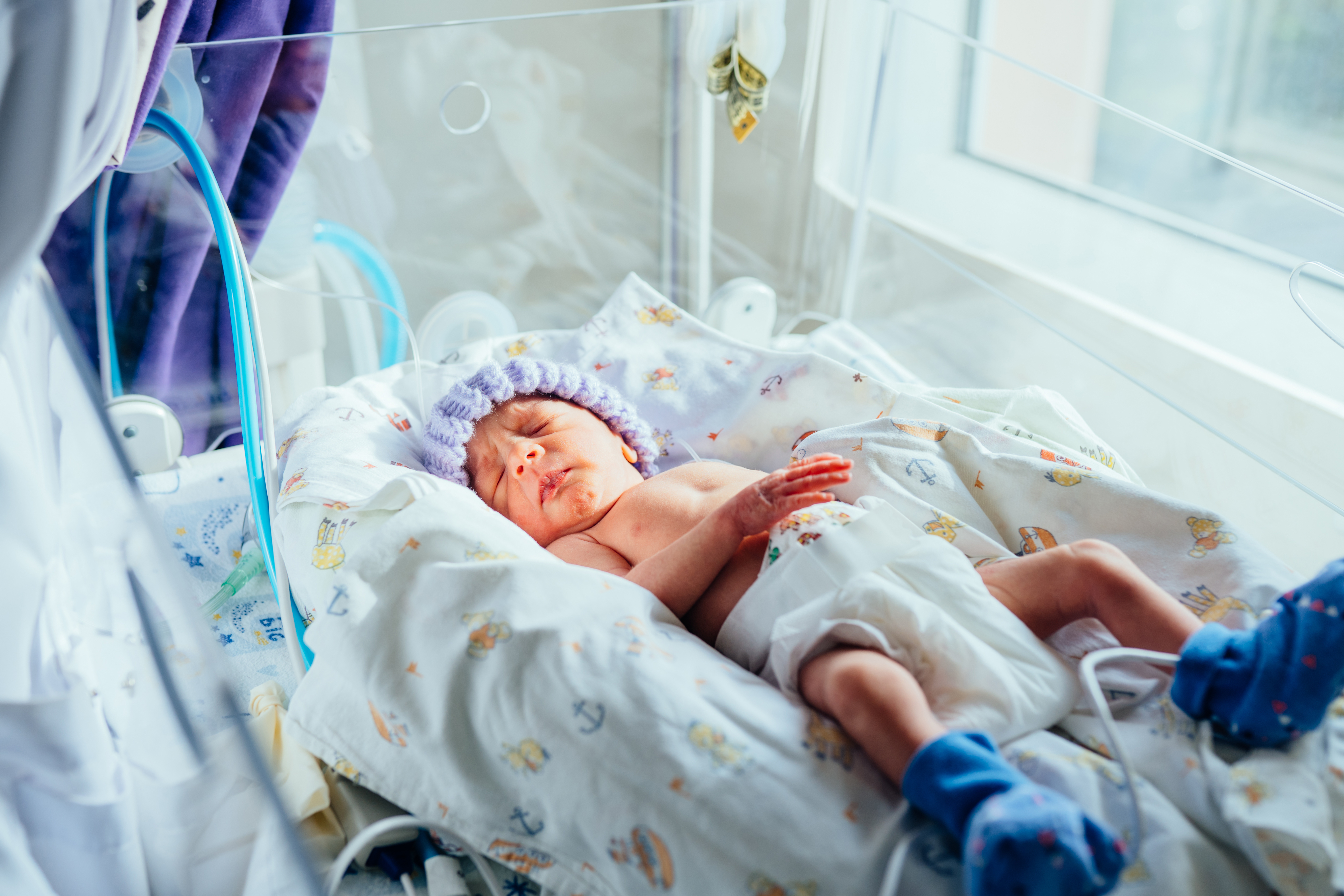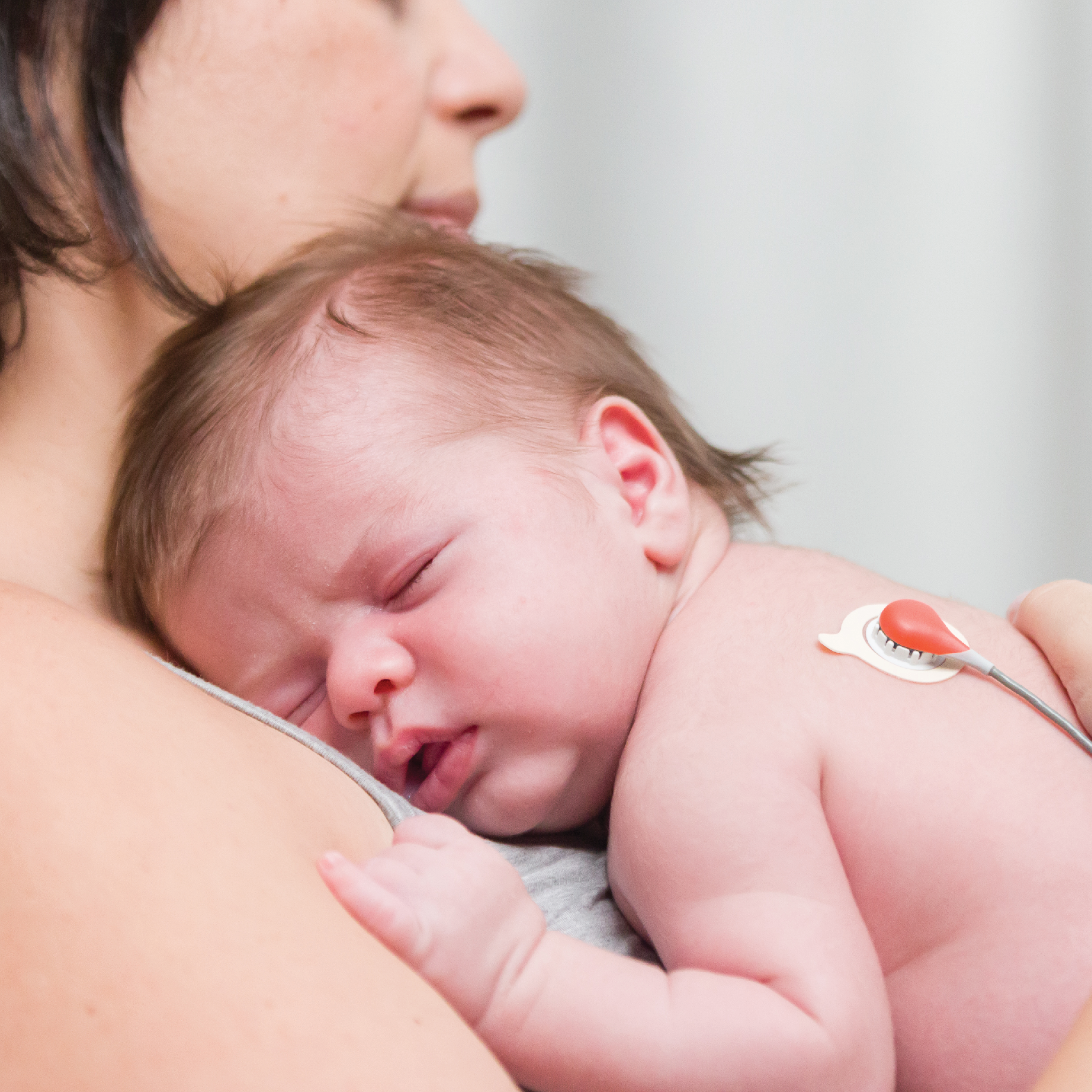As NICU nurses, our role extends far beyond delivering life-saving care. We lead quality improvement initiatives like neuroprotection, collaborate with multidisciplinary teams, and provide essential support to families throughout their NICU journey.
At the heart of it all is patient advocacy. Positioned at the bedside, we have a unique ability to champion our patients, ensuring they receive the safest, most effective care. We’re often the first to notice subtle changes in a baby’s condition, the bridge between families and the care team, and the voice that drives timely, informed decisions.
Continuous monitoring is a powerful tool that strengthens this advocacy, giving us real-time insights into a baby’s status and helping us and the broader team guide their care with confidence. Transcutaneous CO2 monitoring, which provides noninvasive, continuous CO2 readings, is particularly valuable, and can support NICU nurses in advocating for patients confidently and proactively.
4 Ways Transcutaneous CO2 Monitoring Supports Patient Advocacy
By providing continuous, real-time CO2 measurements, transcutaneous monitoring can support assessment of patient status, proactive response to patient changes, and effective collaboration with the broader care team. Let’s talk about four key ways this can enhance your patient advocacy across the care continuum.
1. Promoting kangaroo care
In the NICU, there’s a growing emphasis on neuroprotective care — an approach aimed at minimizing pain and stress to support healthy brain development. Alongside practices like dimmed lighting, noise reduction, and pain management, one of the most well-loved strategies across units is kangaroo care. This skin-to-skin contact between a baby and their parent not only fosters healthy neurological development¹ but also strengthens the parent-infant bond, providing comfort and connection throughout the NICU journey.
That said, facilitating kangaroo care isn’t always easy. Premature and critically ill infants require careful handling, and ensuring their stability during skin-to-skin time takes coordination. That’s where we, as NICU nurses, play an important role — guiding parents through the process while closely monitoring our patients’ well-being. And, the right tools can help make this process easier.
With transcutaneous CO2 monitoring in place, we can confidently support skin-to-skin care while making sure the baby’s respiratory status remains stable. Stable CO2 readings may provide the reassurance needed to allow for longer bonding sessions, while any changes can prompt timely intervention. Ultimately, this real-time monitoring can give the insight needed to facilitate kangaroo care with greater confidence, supporting both safety and connection.

Using transcutaneous CO2 monitoring when advocating for a patient might sound something like this:
“Mom has been doing kangaroo care with her baby for an hour, and she’s eager to keep going. Based on the transcutaneous CO2 readings, it looks like the baby is handling the session well and that their respiratory status is stable. I’ll still continue monitoring closely so I can catch any changes early, but for now, we can support more skin-to-skin time.”
By using objective data alongside our clinical judgment, we’re empowered to advocate for practices that benefit both the baby and the family — helping parents feel more connected while still keeping safety at the forefront.
2. Minimizing blood loss
As NICU nurses, we know that blood draws are a routine part of caring for critically ill infants. We regularly check blood gases, pH, sodium, and glucose to guide our care decisions, but we also witness firsthand how quickly these lab draws add up. In fact, our patients can lose up to 30% of their circulating blood volume to lab work in their first six weeks of life.²
Many of us have seen efforts in our own NICUs to minimize blood loss and reduce the risks of things like neonatal anemia and transfusions. One tool I’ve found especially helpful in these efforts is noninvasive CO2 monitoring, which gives us another way to assess respiratory status without constantly drawing blood.
Of course, transcutaneous CO2 monitoring doesn’t replace every blood test, but it can reduce how often we need to draw gases — particularly important while managing ventilation strategies in the NICU. With continuous CO2 monitoring, we get real-time insights into respiratory status without the need for frequent invasive sampling. If CO2 levels are stable over time, we can advocate to space out blood gases and rely more on noninvasive monitoring to guide care. This continuous monitoring can foster close collaboration with the respiratory team as they make critical decisions, such as adjusting ventilatory support.
Advocating for fewer blood draws using your transcutaneous readings might sound like this:
“Our baby’s CO2 has been stable on the transcutaneous monitor for the past several hours, and there haven’t been any ventilation changes. Based on this, I’d like to recommend spacing out the next blood gas a bit further and continuing to monitor trends noninvasively. Of course, if anything changes, we can always revisit.”
While blood draws will remain a part of NICU care, reducing their frequency whenever possible through tools like noninvasive monitoring can have a big impact on preserving a baby’s blood volume and lowering some of those associated risks.
3. Managing patients proactively — from the Golden Hour to discharge
As NICU nurses, we are constantly assessing and responding to the smallest changes in a baby’s condition, ensuring they receive the most effective care at every stage. Nowhere is this vigilance more critical than in the Golden Hour — the first 60 minutes of life — when every decision can have lasting effects. But proactive care doesn’t stop after that first hour; it continues throughout a baby’s entire NICU stay, guiding timely interventions and shaping long-term outcomes.
One powerful tool for staying ahead of complications is continuous CO2 monitoring. Keeping CO2 levels within an optimal range is especially crucial for preterm infants, as both hypercapnia (high CO2) and hypocapnia (low CO2) are linked to an increased risk of brain injury.³ For babies on ventilatory support, tracking CO2 trends in real time helps the care team fine-tune respiratory settings, supporting both better outcomes and brain protection.
NICU nurses who are well-versed in transcutaneous CO2 monitoring can play a hands-on role in this proactive approach. By continuously monitoring CO2 levels at the bedside — and being familiar with the safe ranges of CO2 – nurses can detect trends early and collaborate with the respiratory team to make timely ventilator adjustments.
For example, if I notice a rising CO2 trend, I can quickly raise concerns and discuss potential adjustments before levels become dangerously high.
A conversation with the respiratory team might sound like:
“Our baby’s CO2 has been creeping up over the past two hours. I’d like to discuss whether we should make any adjustments to their ventilator settings to prevent further elevation and keep them in the target range.”
Beyond brain protection, continuous CO2 monitoring can also help us support lung-protective strategies, another key priority for respiratory teams. While ventilatory support is essential for brain health, improper management can lead to lung injury. By providing real-time insights, transcutaneous CO₂ monitoring helps clinicians fine-tune ventilator settings, striking the right balance between effective respiratory support and gentle lung protection. And again, by becoming confident in using transcutaneous monitoring at the bedside, NICU nurses can lead a proactive approach — spotting changes as they happen and working closely with the care team to respond swiftly and effectively.
4. Prioritizing less invasive care
Keeping our patients comfortable is always top of mind. But despite our best efforts, some procedures — like blood draws — aren’t always avoidable. Every heel stick or lab draw adds up, and research shows that repeated pain in the NICU can have long-term effects, including lower IQ scores 4 and reduced thalamic volumes. 5 That’s why many NICUs are focusing on ways to reduce pain whenever possible — and as bedside nurses, we have the opportunity to play a key role in making this happen.
Lab testing is one of the biggest sources of pain in the NICU, with heel punctures accounting for 61-87% of invasive procedures. 6 If we want to minimize stress and discomfort for our tiny patients, cutting back on unnecessary blood draws is one of the most meaningful changes we can push for. And because we’re at the bedside 24/7, we have a unique opportunity to advocate for less invasive care — helping to implement strategies that reduce painful testing when it’s safe to do so.
Transcutaneous CO2 monitoring is one valuable tool in this effort. When we trust this technology and understand expected CO2 trends, we can assess stability in real time and advocate for fewer blood gases when it makes sense.
For example, I might say to the team:
“Our baby’s CO2 has remained stable on transcutaneous monitoring for the past several hours. Based on this, I’d recommend holding off on the next blood gas and continuing to monitor trends noninvasively. That way, we don’t have to wake them right now for a blood draw.”
Using transcutaneous CO2 monitoring in this way helps us reduce pain and stress, while also protecting fragile skin from repeated punctures. And beyond that, fewer disruptions mean we can help preserve vital sleep, supporting neurodevelopment and creating a calmer, more nurturing NICU environment.
Strategies From Other NICU Teams
Reducing Blood Draws at Penn State Health Children’s Hospital
In the Penn State Health Children’s Hospital NICU, standardizing transcutaneous CO2 monitoring has made a significant impact. By trusting stable CO2 trends, they extended blood gas sampling intervals from every 4 hours to every 12 — helping to reduce unnecessary blood draws while maintaining safe respiratory management. 7
Read more about their experience
Optimizing Golden Hour Care at Golisano Children’s Hospital
In the Level IV NICU at Golisano Children’s Hospital, the implementation of Golden Hour initiatives — including frequent blood gas monitoring to guide safe ventilator weaning — have led to a reduction in chronic lung disease (CLD) rates. 8
References
- Charpak, N., et al. Kangaroo mother care had a protective effect on the volume of brain structures in young adults born preterm. Acta Paediatr. 2022.
- Widness, J.A. Pathophysiology of Anemia During the Neonatal Period, Including Anemia of Prematurity. Neoreviews. 2008.
- Hochwald, O., et al. Continuous Noninvasive Carbon Dioxide Monitoring in Neonates: From Theory to Standard of Care. Pediatrics. 2019.
- Vinall, J., et al. Invasive procedures in preterm children: brain and cognitive development at school age. Pediatrics. 2014.
- Chau, S.M.Y, et al. Hippocampus, Amygdala, and Thalamus Volumes in Very Preterm Children at 8 Years: Neonatal Pain and Genetic Variation. Front Behav Neorosci. 2019.
- Kapellou, O. Blood sampling in infants (reducing pain and morbidity). BMJ Clin Evid. 2011.
- Mukhopadhyay, S., et al. Neonatal Transcutaneous Carbon Dioxide Monitoring—Effect on Clinical Management and Outcomes. Respir Care. 2016.
- Dylag, A.M., et al. A Quality Improvement Initiative to Reduce Bronchopulmonary Dysplasia in a Level 4 NICU—Golden Hour Management of Respiratory Distress Syndrome in Preterm Newborns. Children (Basel). 2021.





